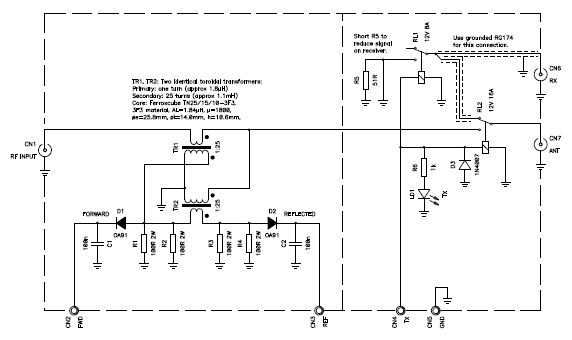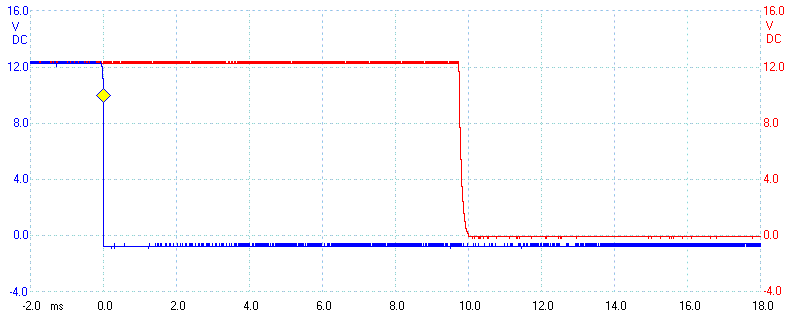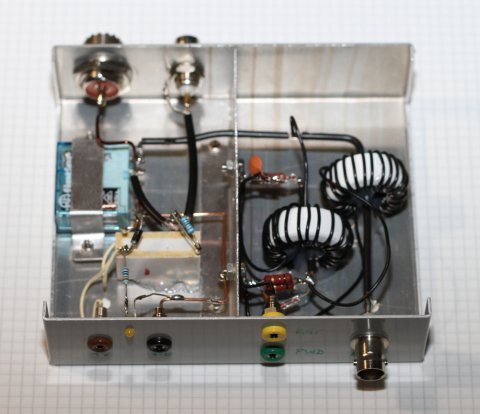
Circuit diagram of the TX/RX switch unit (click to enlarge). – A PDF version is also available: txrxcircuit.pdf (28,642 bytes).
This unit is in charge of switching the antenna between this transmitter and an external receiver and measures forward and reflected power.
The RF power enters this unit via connector CN1 and crosses the directional coupler composed by transformers TR1 and TR2. This coupler is exactly the same as the one used in my stand-alone long-waves SWR meter, therefore I will not describe it again here. On connectors CN2 and CN3 a DC voltage, function of the forward and reflected power respectively is available. A power of 1 kW will generate about 13 V.

Circuit diagram of the TX/RX switch unit (click to enlarge). –
A PDF version is also available: txrxcircuit.pdf (28,642 bytes).
When transmitting, both relays RL1 and RL2 are energized. The RF power will therefore continue through RL2 to the antenna connected on CN7. At the same time the receiver is disconnected from the antenna by RL2 and loaded (or shorted) by RL1. In its first version, the receiver was simply connected to a 51 Ω resistor R5 as good RF practice suggest, but the capacitive coupling inside the unit resulted in a too high signal saturating the receiver. R5 therefore was shorted and a thin coaxial cable (RG174) was used for the receiver connection. The transmitted signal is still audible (and pretty strong) in the receiver, but no saturation occurs anymore and is useful as a side-tone.
Relays are operated by the 12 V signal on connector CN4, coming from the driver unit. Relay switching time is important: in order to avoid problems in the relays and in the final unit, the RF is only applied when the relays are fully switched. LED LD1 just helps debugging the wiring by showing if the relays are energized or not. Switching time has been measured and is visible in the two figures below:

Relay switch-on delay.

Relay switch-off delay.
The blue represents the voltage on the coil and the red trace the status of the (make) contact used for transmitting. This relay takes about 9 ms to make the contact and about 10 ms to break it. In order to be on the safe side, the driver unit waits 12.3 ms before applying RF to the final unit.
An inside view of the assembled unit is visible in the following picture:

TX/RX switch unit, inside view (click to enlarge).
| Home | Electronics | Index | Previous page | Next page |